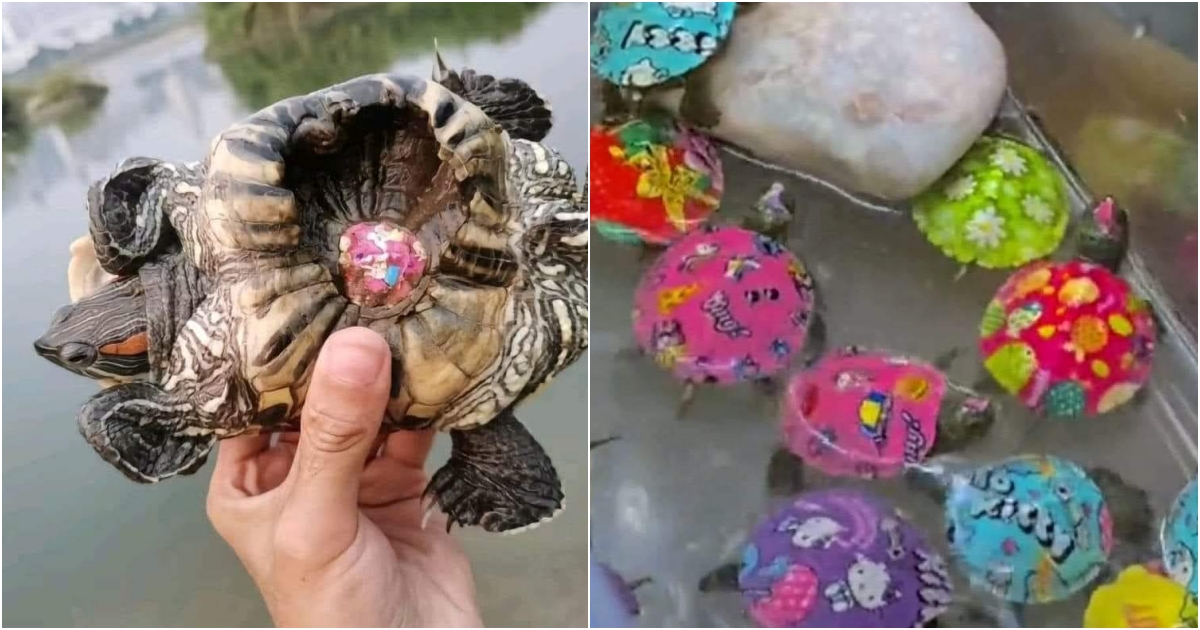SAVE THE TURTLE
The sight of a turtle with its shell painted may seem whimsical or even amusing at first glance. However, the reality is far from lighthearted. This seemingly harmless act of painting turtles for aesthetic purposes has serious consequences for these magnificent creatures.
If you’re wondering why this turtle ended up like that, it’s because the paint obstructs the absorption of the vitamins needed for these species to develop properly, which they get from sunlight.

This practice has been observed for many years, originating in China before spreading to other parts of the world. There are primarily two methods used to color turtles: hydrodipping and heat stickers. Both methods involve applying paint or stickers to the turtle’s shell, which is fundamentally wrong.
The turtle’s shell is a living bone, not merely a canvas for human adornment. Painting or attaching stickers to the shell interferes with its growth and hampers calcium intake from sunlight. This disruption in natural processes can lead to severe health issues such as osteoporosis or Metabolic Bone Disease (MBD).
It’s crucial to understand that turtles are not objects for human entertainment or experimentation. They are sentient beings that play a vital role in maintaining ecological balance. As such, it’s our responsibility to respect and protect them.
So, let’s take a stand to end this harmful practice and ensure the well-being of turtles worldwide. Together, we can make a difference and create a safer, healthier environment for these remarkable creatures. Join us in the mission to save the turtles!
Hits: 65






